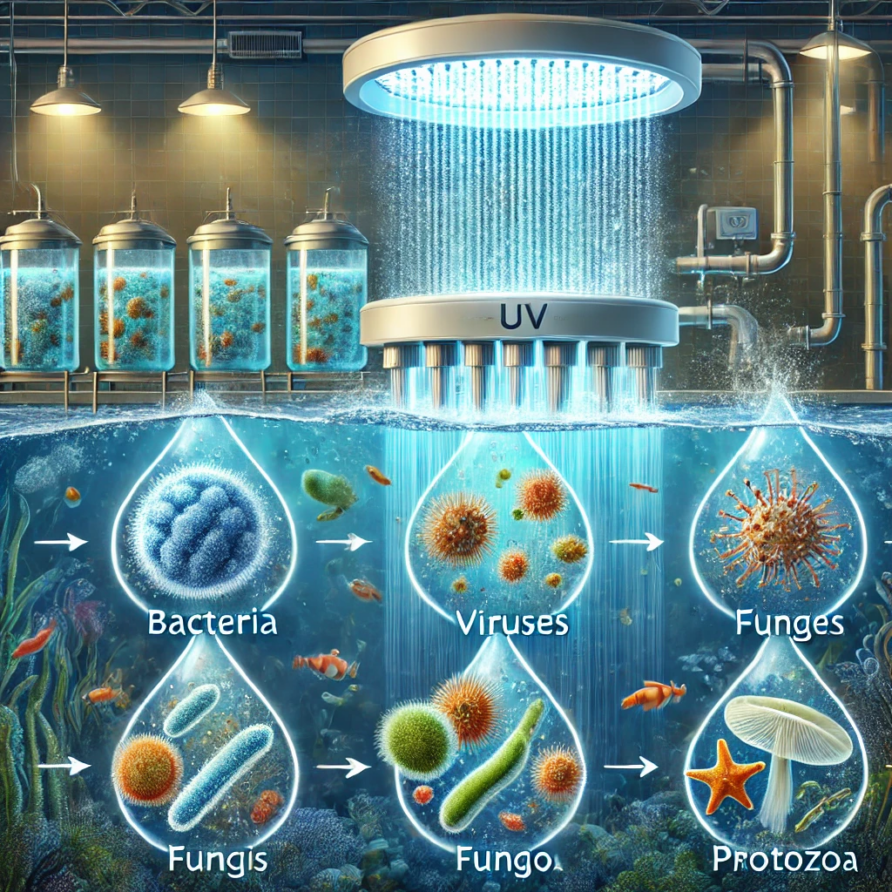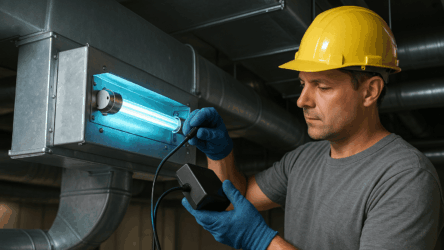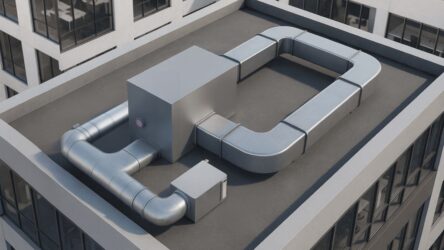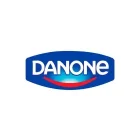The use of ultraviolet radiation in aquaculture is a crucial element in maintaining fish health and ensuring the biosecurity of recirculating aquaculture systems (RAS). UV treatment is a highly effective, chemical-free disinfection method, capable of eliminating a wide range of harmful microorganisms without altering water composition or creating toxic byproducts.
Pathogens in RAS and their risks
Due to high stocking densities and limited water exchange, RAS environments are prone to pathogen accumulation. The most common microorganisms found in these systems include:
- Bacteria – Aeromonas, Pseudomonas, and Vibrio, which enter through water, feed, equipment, and personnel.
- Viruses – Spread via infected fish, biomaterials, and waterborne transmission.
- Fungi – Saprolegnia and similar species thrive in high-humidity conditions and organic waste.
- Protozoa – Parasitic ciliates and flagellates can contaminate water sources and impact fish health.
Common fish diseases in aquaculture
Pathogens in RAS can lead to severe disease outbreaks, increasing mortality rates and economic losses. The most frequent disease categories include:
- Bacterial infections – Aeromonosis causes ulcers and internal organ damage.
- Viral diseases – Infectious pancreatic necrosis primarily affects juvenile fish, reducing survival rates.
- Fungal infections – Commonly affect fish skin and gills, especially in poorly maintained systems.
- Parasitic diseases – Ichthyophthiriosis (white spot disease) results in cysts and severe stress, reducing fish productivity.
Why UV radiation is the ideal disinfection method for RAS
While chemical disinfectants can be effective, they often degrade water quality, alter biological balances, and pose toxicity risks to fish. Ozone disinfection, though powerful, must be carefully controlled to prevent harm at high concentrations.
UV sterilization provides an eco-friendly alternative, efficiently eliminating bacteria, viruses, fungi, and protozoa without affecting water chemistry or fish well-being.
- How UV sterilization works – UV radiation at 254 nm disrupts the DNA and RNA of microorganisms, preventing reproduction and infection spread.
- No residual byproducts – Unlike chlorine or ozone, UV does not create harmful residues, making it safe for aquaculture.
Types of UV disinfection systems for aquaculture
Aquaculture facilities use various UV sterilization technologies, depending on system size and disinfection requirements:
- Flow-through UV sterilizers – Ideal for large-scale RAS operations, capable of treating high water volumes efficiently.
- Submersible UV modules – Installed inside tanks to ensure direct exposure, optimizing pathogen control in high-density fish farms.
Recommended UV dose for RAS water treatment
The effectiveness of UV disinfection depends on water quality and organic load. The optimal UV dose for aquaculture sterilization is:
- 25 mJ/cm² – For clear water with minimal organic contamination.
- 40 mJ/cm² – For water with higher turbidity and organic pollutants.
Water quality parameters for effective UV treatment
To achieve optimal disinfection, RAS water should meet the following criteria:
- UV transmittance: At least 85% per cm.
- Turbidity: No more than 2 mg/L.
- Color index: Below 35 degrees.
- Iron concentration: Up to 1 mg/L.
- Coliphages: No more than 5×10⁴ PFU/col.
If these parameters deviate from the recommended range, UV dose adjustments are necessary to maintain efficiency.
Conclusion
The integration of UV disinfection in RAS is a proven, reliable, and eco-friendly method for maintaining fish health and biosecurity. Unlike chemical treatments, UV sterilization does not disrupt water balance, harm fish, or require additional chemical management.
By implementing high-quality UV systems, aquaculture facilities can significantly reduce disease outbreaks, enhance fish survival rates, and promote sustainable fish farming practices.
For advanced UV sterilization solutions tailored to RAS, UVL offers specialized equipment designed for optimal water treatment. Contact our experts for guidance on system integration and selection.







